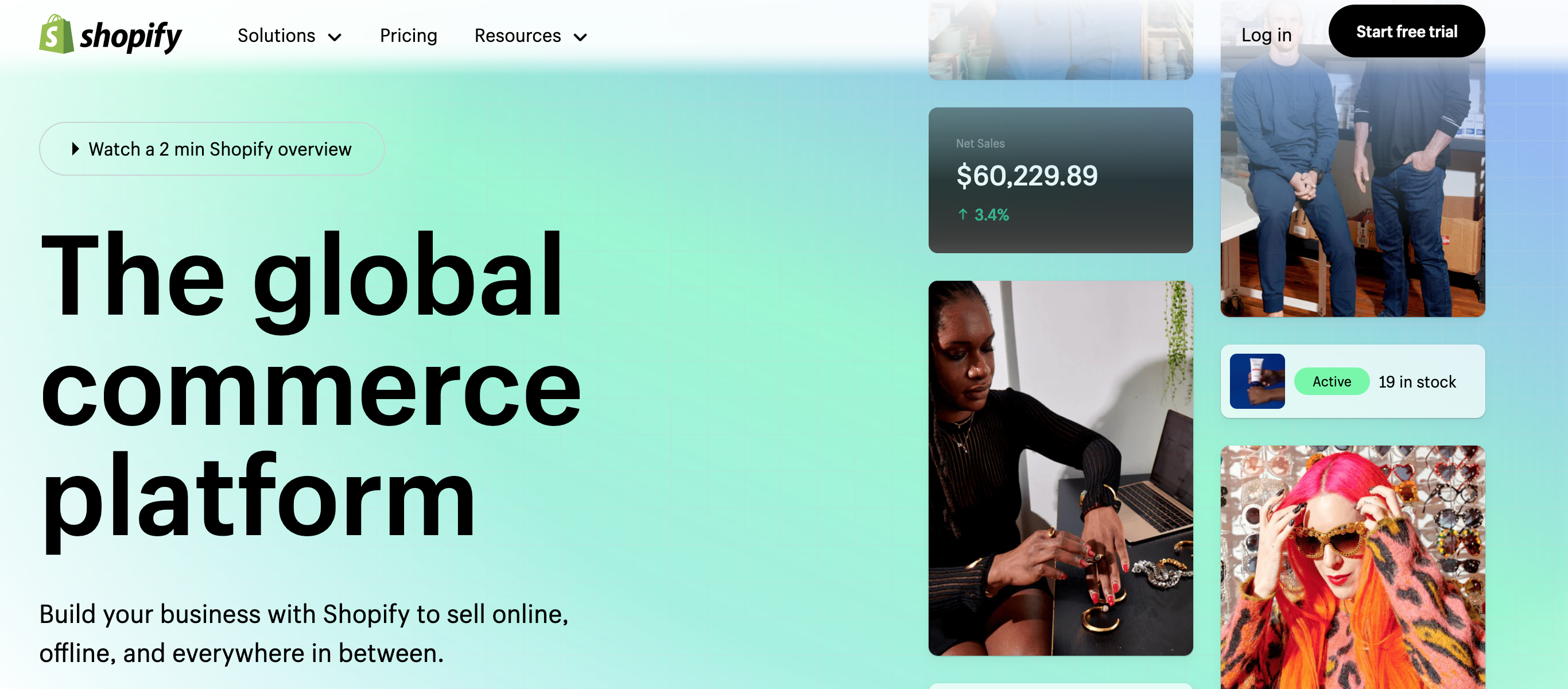Today’s fashion industry is becoming more and more inclusive, catering to some of the historically underserved groups of society. One such group is the plus size group.

How to Sell Plus Size Clothes Online: Empowering Fashion for All
With body positivity and inclusivity taking centre stage, the demand for clothing and fashion concepts that cater to the needs of the plus size market are continuing to rise.
The trends are presenting opportunities for entrepreneurs who want to venture into this space to claim their market share.
In the previous article we answered the question: How Much Inventory Should I Start With for an Online Boutique? This post is a guide on how to start a boutique that sells plus size clothes online.
A How-to Guide
Market Research and Target Audience
The first step in starting a plus size online clothing boutique is to conduct market research and identify your target audience. Identifying your market requires that you consider the demographics that you are working with.
Your market research must answer these questions:
- What is the age range you are intending to target?
- What style preferences characterize your market segment?
- What are the shopping habits of your target market?
- What is the disposable income range of your typical target customer?
Answering these questions will help you to tailor your product offerings, niche down and execute a laser-focused online boutique business strategy.
Gaining Insights Into your Target Market
As part of your market and due diligence, there are various instruments you can consider to gather some data and insights.
In order to gauge market sentiment of the plus size niche you can run surveys to get first hand feedback from the ground. Consider exploring online forums, asking questions and running polls there, also check where the conversations are going on social media platforms in relation to plus size clothing niche.
To ace your fact finding mission, engage your potential customers about what challenges they face when trying to buy plus size clothing:
- Are their preferences met?
- What would they like to see in plus size clothing?
- Etc
Getting answers to these questions from the market enables you to position your brand for relevance and success. Also, this way you will be in a position to put together a well curated collection that will meet the specific and diverse needs of your market.
Conduct Competition Analysis
Having gathered feedback from your target customers, you can now move into competition analysis. Scour the fashion industry for what it has to offer to the plus size market. Identify brands close to what you seek to do in terms of product offerings.
Identify the gaps, strengths and weaknesses of what is currently available in the market and come with ideas to plug the gaps you have identified. This will help you to set up a brand and product range that stands out and attracts customers.
Creating a Business Plan

Many want to-be entrepreneurs overlook the importance of creating a business plan for their business idea. In most cases this is because they think they have it all figured out. This often turns out to be a big mistake.
There are many benefits of creating a business plan as outlined below:
Defining Your Brand Identity and Unique Selling Proposition
Creating a business plan will require you to define the identity of your brand and your unique selling proposition (USP). A USP articulates clearly what sets your plus size business model apart from the rest.
Your unique selling proposition could be a service for bespoke tailoring, customisation and personalisation, or affordable prices or even high quality fabrics, etc.
Defining your USP also enables you to set your vision, values and mission.
Outlining Your Product Offerings and Inventory Strategy

Identify the types of plus-size clothing and accessories you will offer in your boutique. Consider the different categories such as casual wear, formal wear, activewear, or specialized items.
Determine the quantity and variety of products you will stock based on market demand, your budget, and storage capacity. Plan how you will source inventory to maintain a diverse and appealing collection.
To solidify your business ideation you need to define the spectrum of your inventory down to granular levels. What product offerings will be seasonal? and what will be your staples? Also consider categories such as:
- Formal Wear
- Casual Wear
- Active wear
- Specialized items
You also need to quantify the inventory you will need all year round and also spell out how your take off inventory is going to look like in terms of quantity and diversity.
Plan how and where you will source your inventory and how your brand will sustain an appealing, well curated and diverse collection.
Setting Pricing Strategies and Profit Margins
Developing and setting a pricing strategy is another important part of your business plan.
The idea is to strike the delicate balance between affordability and profitability.
Your pricing strategy must be informed by factors such as inventory costs or production costs, competitor pricing as well as the price sensitivity of your target market. i.e. What is the living standards measure or Social-Economic Measure of your target market?
Answering this question helps you to gauge how much disposable income your typical customer has. You also need to work out your profit margins while ensuring that your pricing remains competitive.
Build the Marketing Strategy

A well-researched and thought out plan on how you are going to drum up awareness of your brand and how you will reach online. This involves building a comprehensive omni channel marketing strategy to put your products in front of the eye balls of your target customers.
Plan a social media strategy beyond simply creating pages on Facebook and Instagram and posting a few images. Also consider search engine optimisation (SEO), content marketing, email marketing and running some cost per click advertising campaigns.
You may not need to do everything at one. You may consider picking a channel and doing it well. However the basics of your online presence must be in place across the platforms and communities where you intend to make your plus size clothing brand visible.
Allocate a budget for the marketing strategy and set clear performance indicators so you can track the effectiveness of your efforts.
Establishing Financial Projections and Budgeting for An Online Boutique Start-Up Costs
You need a consolidated projection of the financial outlook for your business idea.
Your financial projections must span running expenses, revenue and profit. Pay attention to start-up costs, inventory costs, the cost of setting up an online store – this could be through leveraging a robust ecommerce platform like Shopify or you may choose to go the stand alone online store route.
Whichever route you take you need to quantify the costs. Ecommerce platforms are a better alternative to building a stand-alone ecommerce property.
With a stand-alone online store website you will incur substantial costs in building all the key functions and functionalities into your online store. You will have to rely on a developer to set up everything for you.
When you consider what goes into maintaining and growing an online store, the best option is to leverage a solid ecommerce platform like Shopify and for a fraction of a monthly cost ($25.50), you can get your online store up and running in minutes.

Also an online store built on Shopify comes with all the features you need to start selling securely online. Instead of hiring developers to integrate payment gateways to your store for example, an online store built on Shopify comes with over 100 payment gateway options off the shelf.
Shopify has powerful digital marketing and search engine optimisation tools and features. For SEO, Shopify enables you to define the meta tags and headings (H1s) of your product and online store pages.
This enables search engines to find and index your online store pages against relevant search queries. This increases the chances of your online pages ranking and being findable on Google. This leads to higher organic traffic prospects for your online store.
The main objective of creating financial projections and a financial plan is to allocate funds and secure funding for your business. This needs to be followed up by sound financial performance monitoring and evaluation when the business has started running. Hence the business plan is critical for not only getting your boutique business started, but for running and growing it as well.
Starting Your Plus Size Online Boutique
Sourcing and Curating Plus-Size Fashion
Identifying Reliable Plus Size Clothing Manufacturers
After all the researching, numbers crunching and planning, it‘s exciting to finally get off the ground and get started. First things first: you need to identify reliable plus size clothing manufacturers.
Take note that this is a relatively emerging market and you may not find suppliers readily accessible in your area.
In your search pay particular attention to suppliers that specialize in plus size clothing and have a good track record in producing high quality clothing for a diverse range of styles, variations including in the plus niche .
For each supplier you short list, do thorough evaluations for:
- Product Range
- Fabric Quality
- Pricing
- Delivery turnaround time
- Capability to sustain your inventory demands in the long term
- Credibility and customer service (check sites like TrustPilot.com for reviews, feedback and testimonials)
What should then follow is building relationships with suppliers so as to start engaging them to get to the next step. The next steps involves assuring the prospective products that will constitute your take off inventory.
Go for fabrics that are durable and comfortable as well as suitable for different seasons and occasions. In satisfying the diverse penchants of the plus size market you need to be strategic about choosing merchandise that flatters various body sizes and shapes.
Consider suppliers who have a track record for ethical labour practices, waste management and usage of eco-friendly materials. This way you will future proof your business model as the pursuit of sustainability is in fact a growing trend across the fashion industry.
The key to setting up a thriving online business is to build an audience. Leverage your omni channel marketing strategy to build a community around your brand and products.
Leveraging eCommerce platforms such as Shopify, BigCommerce, Squarespace and Sellfy to eliminate the headache of creating and maintaining a stand-alone ecommerce store.
Evaluate these ecommerce platform options on the basis of:
- Ease of use (for your back end admin for the store front)
- Payment gateway features and options
- Customisation options
- App ecosystem (important for extending the default features and functions of an online store)
- Pricing
- Integration possibilities particularly with inventory management systems
Also opting for a high end ecommerce platform like Shopify will help you create a visually appealing online store that is aligned with your brand identity, logo and colors. Compliment this with high quality product display images and also add clear as well as informative (not too salesy) product descriptions.
You also need to make sure that your online plus size store is easily navigable. The phenomenal growth of mobile commerce and social commerce means that more and more consumers are conducting online shopping through their mobile devices.
This implies that you must thoughtful about ensuring that your online store pages are optimized for desktop, smartphones and tablets.
Providing Excellent Customer Service
In order to take your online plus size boutique places, you need to be intentional about providing excellent customer service. This requires you to be strategic about creating positive shopping experiences for your customers.
Help your customers make well informed choices that satisfy their preferences and save them some money. Provide detailed guides and catalogues with clear details on sizing, colours, styles, etc. Also provide accurate measurements for each garment to reduce the likelihood of returns and customer dissatisfaction.
You can also up your customer service game by making provisions or tailored personalizations and customizations. Also consider leveraging virtual styling technology to give your customers options to sample different product options and variants before they make the final choice.
Make sure you have a transparent and easy to follow returns and exchange policy. Your customers must be able to return and to exchange products hassle-free.
Also encourage feedback, reviews and testimonials across the shopping experience of your customers. Make use of the feedback plus data from your sales and inventory analytics to make informed decisions about which product lines you need to invest more in, or replace and also map out what your plus size boutique needs to improve on.
Scaling and Expanding Your Plus-Size Boutique

Once your boutique starts growing, it‘s time to consider different ways to scale your business. Data from sales and website traffic will indicate if it’s the right time to scale or not. The key here is to identify the growth points. Do you need to add more product categories or you just need to drive up sales of the existing product line? Or both?
To scale your business consider getting into collaborations and strategic partnerships with other brands and influencers. Also consider tapping into some offline opportunities such as setting up Pop-up shops and doing Trunk Shows, etc.
Final Thoughts
Running a plus size boutique online requires diligent planning, research and crafting a market centric approach.
Getting a nuanced and granular understanding of your market segment will position you to offer well curated product offerings to your customers and set your brand apart from the rest of the players in the market.
Implementing effective marketing strategies is what will take your boutique places and rake in the profits.
Remember that selling plus size clothing is not just about selling clothes, it’s a whole movement centred on promoting inclusivity, empowering individuals and transforming the fashion industry.
This needs to be clear in your messaging, marketing and branding. With a thriving community that shares the same values and vision as your brand, it’s a matter of time before your online plus size boutique becomes a resounding success.
All the best in your entrepreneurial endeavour!

